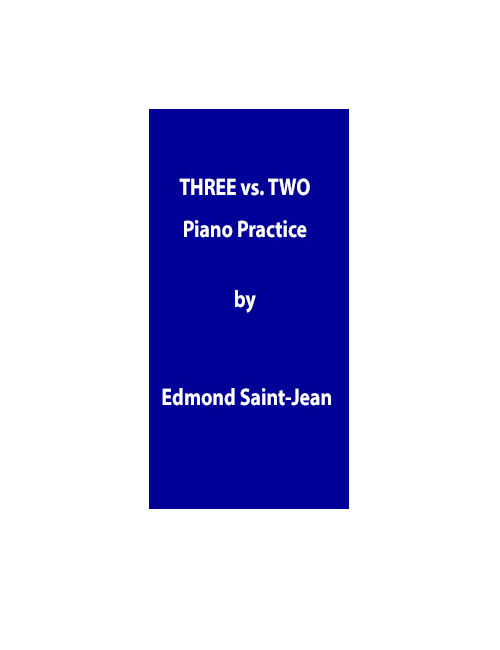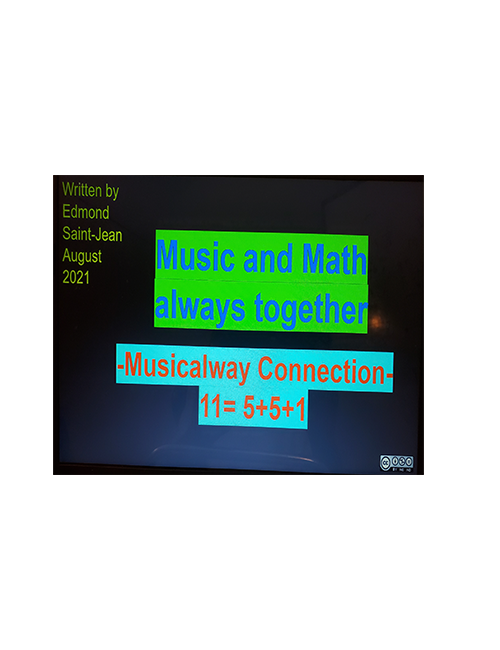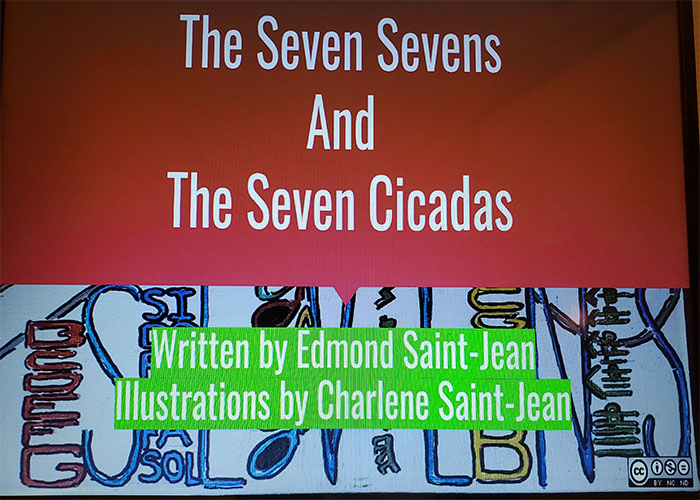The two most popular functions of the curved line in music theory are: the slur and the tie. The curved line in music has many names according to its functions. The slur, for instance, is a curved line placed under or above a group of notes to signify that they are connected together when they are being performed vocally or instrumentally. That curved line also known as legato. When a curved line connects two notes written in the same line, no matter the value of those notes, and even when they are placed inside a measure and/or across a bar line, it is called a tie.
Some of the most prominent symbols in music theory are present in all aspects of music melodic composition. The sharp, the double sharp, the flat, the double flat, and the natural. The sharp (#) raises a note by half tone. The double sharp (x)raises a note by a whole tone. The flat (b) lowers a note by half tone. The double flat (bb) lowers a note by a whole tone. Then the natural cancels both sharp and flat. The sharp and the flat placed at the beginning of as staff indicates the key signature. There are seven sharps and seven flats.
There are seven sharps set in a circle of fifth format. A circle of fifth is the sequence five letters set clockwise counting the first letter as one. For example, F to C, where F is number one, F C G D A E B with F counted as one and C as number five. The sequence continued between the following letters CG, GD, DA, AE, EB, until it returns to the starting point F, completing the full circle of fifth. F C G D A E B is a circle based on F to F circumference that is read from left to right.
The seven flats are also part of a circle of fifth. Interestingly, the sequence of letters are read from right to left without any alteration from the original sequence of sharps: B E A D G C F. What makes these two sequences important is the fact that they are reversely similar.
The dot (.) is an important symbol in music theory and in music performance practice. When placed after a note or double horizontal dots, adds half plus half of the half to the value of that note. for instance, A double dotted whole note is equal to seven beats- four beats, the value of the note, plus two beats the value of the dot, plus one beat the value of the second dot. Staccato which mean short, detached or raindrop(figuratively) is indicated by a dot under or above a note depending on its position on the staff.
A semi-colon, which is made of two dots, when placed in two opposite of a measure constitute the repeat sign. The two dots placed vertically in opposite side of the 4th line create the bass clef.
The staff is a group of 5 lines and 4 spaces patterned to the sequence of line, space, line, space etc… The lines and the spaces are always counted from bottom to top. The following words: steps, skips, and leaps depend structurally on the system of sequence created by the lines and spaces. A succession of lines and spaces such as A B C D E F G. From this sequence of lines and spaces we can extract the lines or the spaces only. A combination of three or more lines or/and spaces create chords also known as arpeggios.
The chords are a group of two or more thirds. However, every combination of thirds has a different name and structure. There are two types of chords, the block and the broken chords. The latter is also called arpeggios or broken chords. It is used for melodic instruments or to differentiate from block chord that is stacked on top of each other. The chord can be altered by interchanging the parts of the thirds. The group of two thirds make a P5 (perfect fifth) that can be rearranged in two different sixths.
The interval, by definition, is the space between two notes. If the same letter note is repeated it is not an interval but, it is known by the word unison or prime. The degrees between the C Major scale are divided between three sections the perfect, minor, and major. The intervals that fall within the perform intervals are the prime, fourth, fifth, and eighth, also known as octave. The minor and the major intervals share the same degrees, with the difference of half tone.
The intervals are Major 2nd, 3rd, 6th, 7th. Then the minor intervals are 2nd, 3rd, 6th, and 7th, while the latter group is half a tone smaller than the first group.
The piano in other words the piano forte as it is known originally, is a compilation small patterns of notes arranged in sequence. At first glance, we can see patterns of black notes alternating between groups of 2 and 3. Close by are the patterns of 3 and 4 black notes. The combination of one group of 3 and 4 white notes, mounted by groups of 2 and 3 black notes make up the first octave. When the octave of notes is multiplied by seven we have over three quarter of the keyboard.
However, the pianoforte is made of 88 keys. The mathematical formation a few more patterns will help reach that number. While A, A#, B, C are repeated eight times through the keyboard the other notes are repeated seven times. When we do the addition of the groups of seven and the groups of eight, the result will be 88 keys.
The standard guitar is made of six strings. The unusual disposition of the strings that read from right to left (6, 5, 4, 3, 2, 1) coincide with many languages like Hebrew, Arabic, Aramaic, Persian, Syriac, Urdu among others that are read from right to left. The guitar read from the smallest string to the biggest string with the same name.[E]. Interval is important in the creation of all instruments and the guitar is no exception. The six strings are [E, A, D, G, B, E]. They are considered to be open chords when they are strummed and not pressed to make a sound.
Any instrument that requires a mouthpiece or an opening to blow air through to make a sound is an wind instrument. Wind instruments are numerous and different from cultures and languages. In grade schools, more specifically elementary schools, the recorder is one of the most popular wind instruments for beginners who are interested in playing wind instruments such as clarinet, flute, trumpet etc….. The recorder is special and deem mentioning because among other reasons, the fingerings used are standard hands position for most id not all wind instruments. The left hand is on top and the right hand is at the bottom. The left hand uses 3 fingers [index, middle finger, and ring finger], while the thumb is the only finger in the back of the instrument. For the right hand, all the fingers except the thumb is allocated a finger.
The sound is made through a combination of fingerings. The mouthpiece is unique in the sense that the shape of the embouchure is carved to fit on top of the lower lip, allowing the top lip to make a shape around the mouthpiece. The left thumb plays a crucial role is the creation various sound. It can either cover the whole completely, half way or completely removed.
The voice is one of the most prolific instruments. It has multiple functions namely speech, singing, and making various sounds. It is a communication tool that uses intonation, utterance, that requires a lot of disciplines to be an effective tools. Like a car, an airplane, the voice needs to warm up. I have compiled and created vocal exercises that help singers from pre-Kindergarten and upper grades levels to prepare their voices for the singing of melodic and rhythmic patterns in tune. Singing in tune signifies repeating a set of pitches as given without any alteration. First of all, vocal exercises consist in shaping the mouth properly to enunciate words encountered in songs, and daily words. The most basic example is the use of the 5 vowel sounds that indicate the opening of the mouth from small to big. Then the breathing exercises is the first challenge for all aspired singers. Inhale on the count of five and then exhale using the psssss sound.
Then I use advanced vocabulary words known as performance words to enlarge the knowledge base of all learners. Among others the following performance words: legato, staccato, arpeggios, scale, half tone and many more.
When a musician opens of music score, the first order of service is to identify the key, the range of the piece. It is a process that involves the position of specific symbols. The expression the law of the Medes and the Persian can apply to this situation. A well-informed musician must know that the following three symbols are always in that sequence: the clef, the key signature, and the time signature or meter.
There are seven symbols with identical functions as the treble clef. The latter is known under three more names: G clef, high clef, Cle de sol. The six other clefs are the alto clef, mezzo-soprano clef, tenor clef, baritone clef, and bass clef. Those clefs have the same names as the human standard voices that indicate the different ranges of pitches from very high to very low.
The second symbol in the start of the staff is the key signature. As the meaning of these symbols indicated those symbols hold the key to identify what key a piece is written in. The key signature has fourteen symbols, seven sharps and seven flats. Everyone of those symbols represents at least two different types of keys: major, minor and modal. Those key signatures help differentiate between the major and its relative minor clefs. Then the parallel scales make good use of the key signature.
The time signature or meter determine the number of a given note in a measure. That symbol is a fraction, letter or whole number. The meter can be a simple or compound symbol. The simple meters are represented by even and uneven numbers. The numerator indicates the number of a given note per measure, while the denominator represents the type of notes [whole, half, quarter] that is counted per measure by the numerator.
The time signature is made simple meters and complex meters also known as compound meters. The simple meter are [2/4, 3/4, 4/4, C, ] while the compound meters are [6/9, 9/8, 12/4, 3/2, etc…]. There are more advanced combinations of 2 simple meters called the asymmetrical meters. For example [5/4, 7/4]. To better understand the name asymmetrical meter, we can combine [3+2/4 – 3+4/4]. In other words, [3/4 + 2/4 – 3/4 + 4/4]. These various types of meters help produce the off beat feelings of a piece of music.




Quick social visits